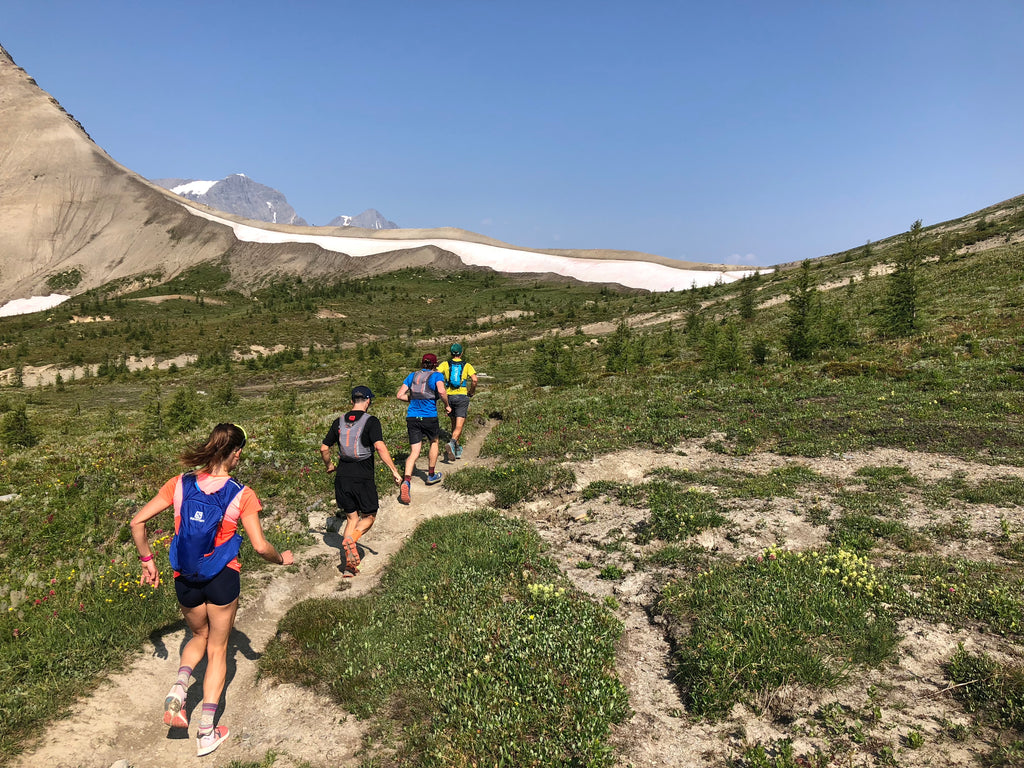
The Rockwall - Alpine Runs in the Rockies
We are lucky to have tons of high-quality trails here in the Rockies. Although great views are in our backyard, a few more difficult and longer trails deserve the status of “Classics” by the quality of the scenery and the world-class trail running that they offer. Think Northover Ridge, Skyline, Berg Lake or the Rockwall for example. No wonder why so many backpackers have these on their bucket list!

As trail runners, we have the advantage that we can enjoy these astonishing landscapes without the burden of an overnight pack, as long as we can make it in less than a day.
Last week, we ran the Rockwall with FKT-holder Adam Campbell (6 hours and 3 minutes) and some friends of ours. It consists of a 56 km point-to-point circuit in the Kootenays and it is renowned for some of the best alpine running one could ever dream of.
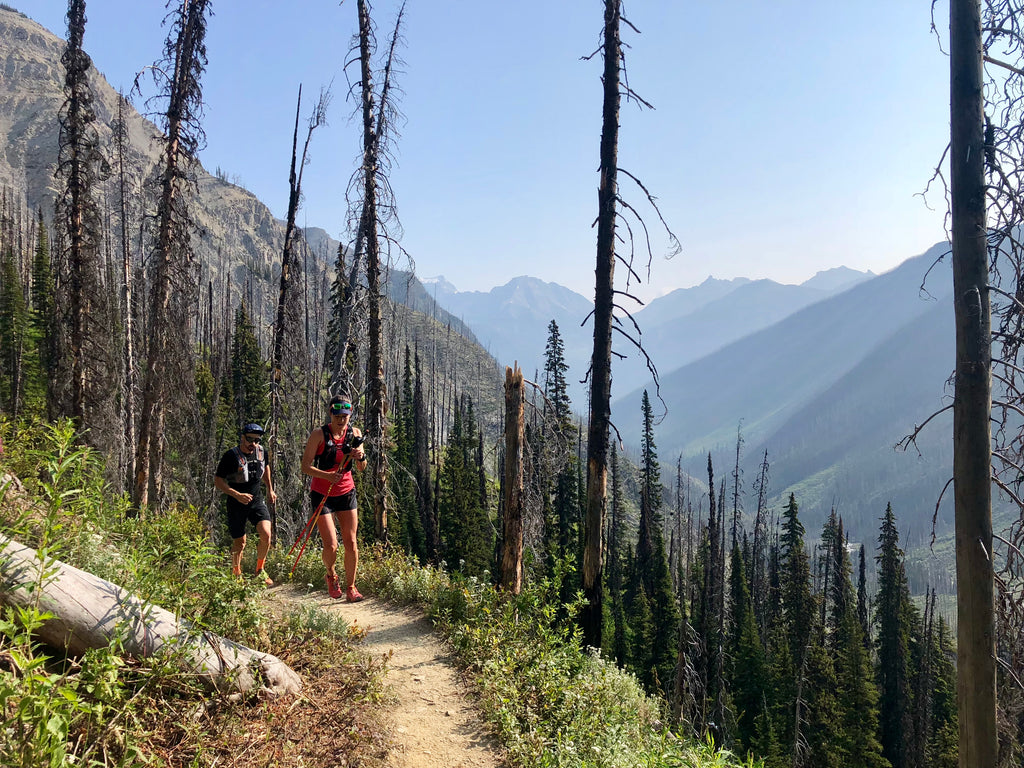
A few stats (according to my watch):
- 55.6 km
- Highest altitude: 2356 meters
- Elevation Gain: 2686 meters`
- Elevation Loss: 2555 meters
- Total time: 8h50
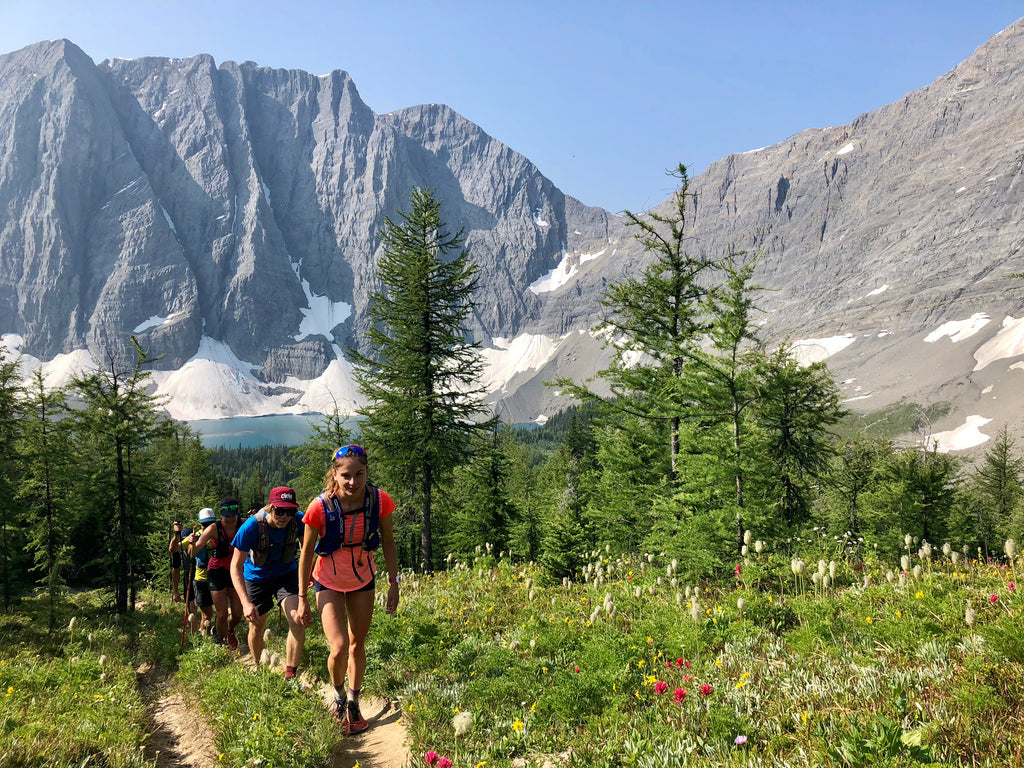
After dropping a car at the Paint Pots trailhead not too far from Marble Canyon, we drove down to the Floe Creek trailhead to begin our journey on the Rockwall. Although running from South to North means a net elevation gain at the end of the day, it is also the easiest way to do it. Most of the elevation gain is achieved during the first half of the trail and the last 14 kilometres towards the Paint Pots is an enjoyable downhill.
8:40 AM, time to get going.
The first few kilometres on the Rockwall are the classic Kootenay experience. It’s a beautiful trail in a burnt forest and offers some seriously enjoyable views. A pleasant uphill then takes us up to the first highlight of our trip, Floe Lake (km 10). As we will do for every future creek crossings we’ll encounter, we stop a few minutes to top our flasks and bladders and we head up gradually towards Numa pass, our highest point of the day.
Tumbling Pass is up next, a fitting name for a few falls and “tumbles” along the way. Despite some “just ok” views on the climb above Numa Creek, we quickly reach tree line and the views above are simply breathtaking. Hanging glaciers, seracs, glacier-fed rivers and blooming flowers are all we can see for miles. One would expect the best sceneries to be over past that point, but the trail keeps offering outrageous viewpoints for a total of over 30 kms, down into Tumbling Valley and up over Rockwall Pass.
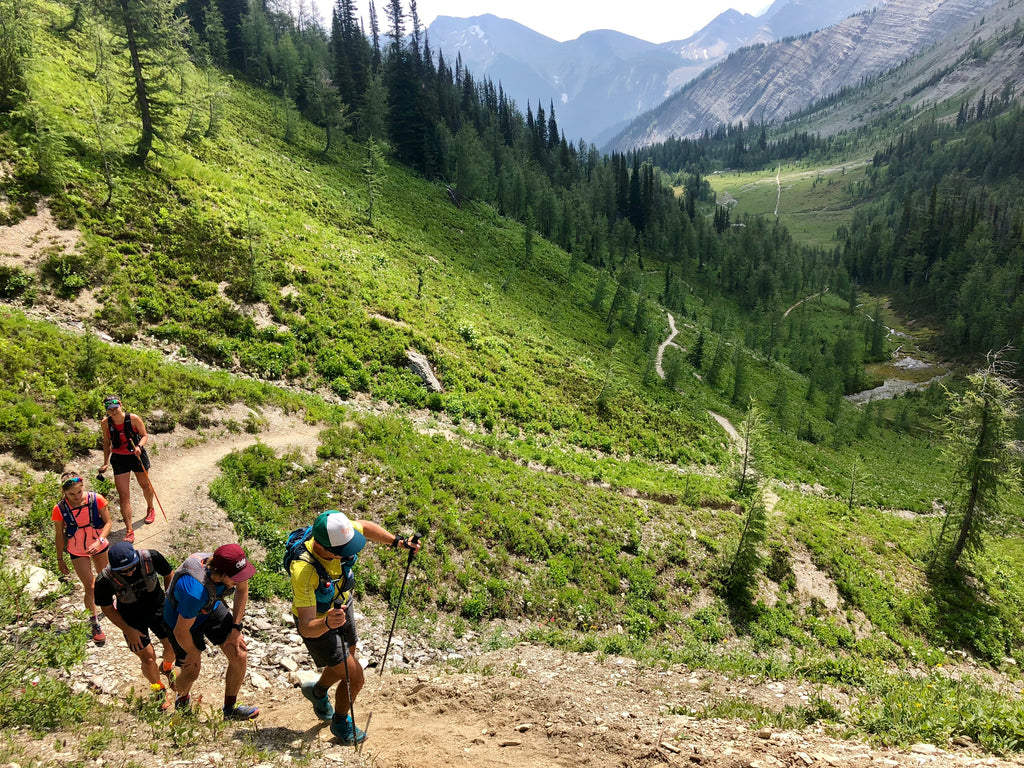
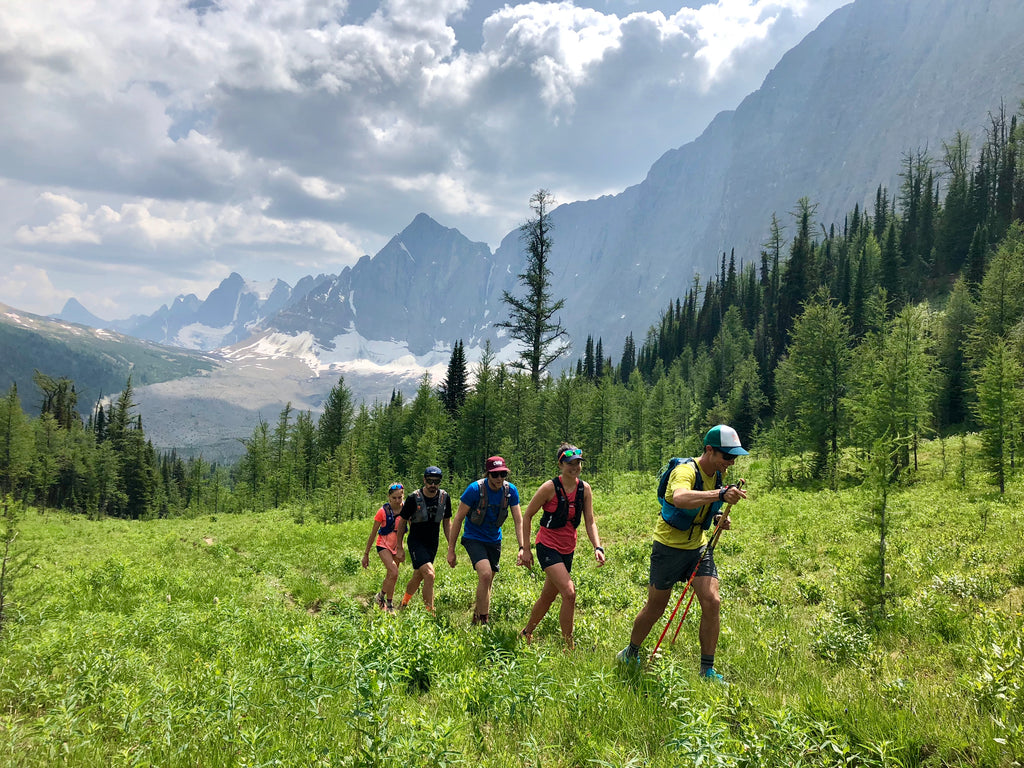
By the time we are at Helmet Falls, we have already covered 42k or so and most of the difficulties are behind us. All that is left is a fun, mostly downhill single track that takes us back down to the Paint Pots. A total of just under 9 hours and views for days!
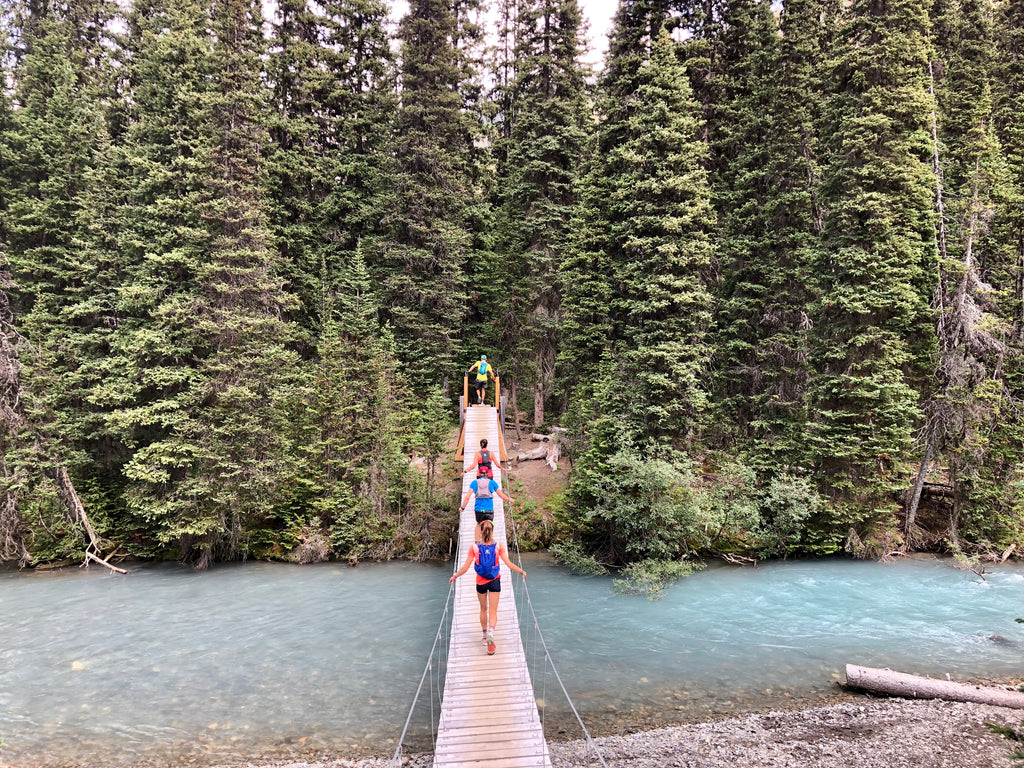
A few tips and tricks to venture on long alpine runs
- Always check if water will be available on the way, and how often? In our case, we all left with a couple soft flasks and a Katadyn BeFree filter. By refilling in the creeks along the way we didn’t need to carry heavy bladders.
- Bring appropriate rescue equipment: A GPS messenger device, an emergency bivy, a space blanket, bear spray, a few band-aids and some tape are the strict minimum for long days spent in remote areas. After that, it depends on how light you want to go…
- Think about your poles. While it makes sense to carry poles for long and steep climbs, the advantage they provide might be negated by how cumbersome they sometimes are to carry while running flats and downhills. Make sure that you either have a good system to carry them or that you won’t get super annoyed from carrying your poles in your hands for many hours.
- Don’t get intimidated by the idea of “running” the Rockwall. Yes it is a long trail and it does feature a decent amount of elevation gain, but really, “running” in this case means a variable mix of running and hiking. All but the fastest runners hike the climbs and run when the terrain is easier.
- Bring enough food, but not too much. A good rule is to plan 200 to 300 calories per hour and to plan for an hour or two longer than your estimate.
- Start early. It can get really hot in the valleys below treeline and even up in the alpine. It can get scorching hot if there is not a cloud in the sky. Starting early will help you avoid the warmest hours of the day and will give you extra time to work with in case you get delayed. A small container of sunscreen is never a bad idea.
- Research the route before you go. It’s easy to lose huge chunks of time getting lost. Know the important junctions and ask fellow hikers if you are not sure of the right direction.
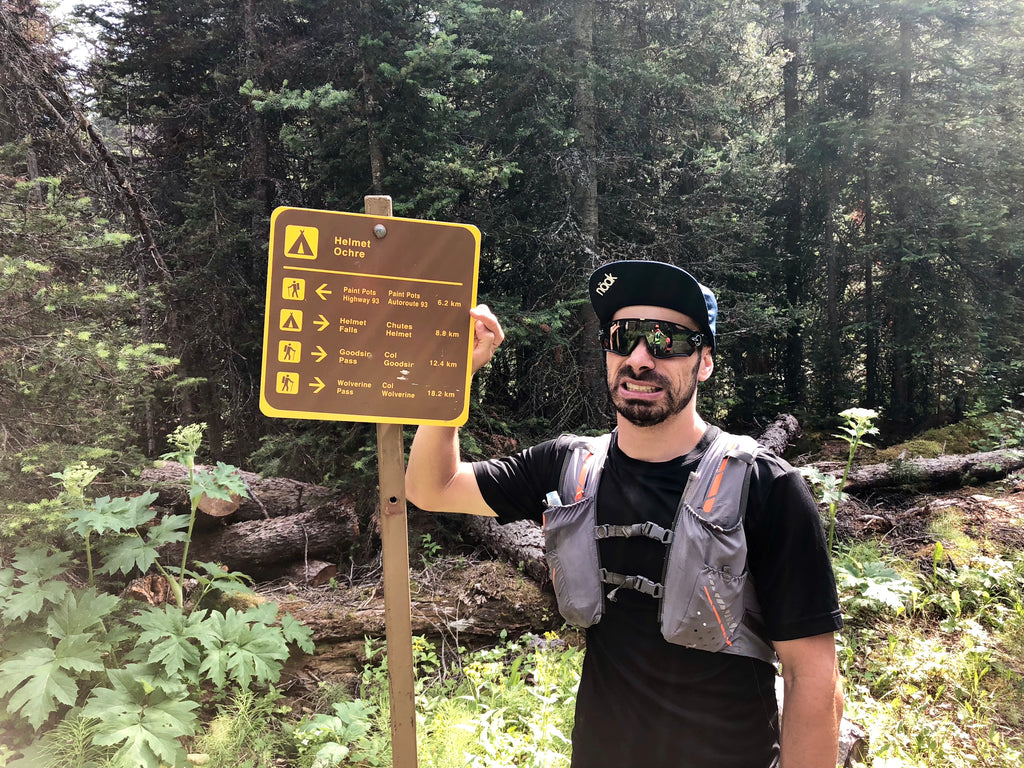
Now that you have some additional info, go get those routes. It’s summer and time for big trail runs.




